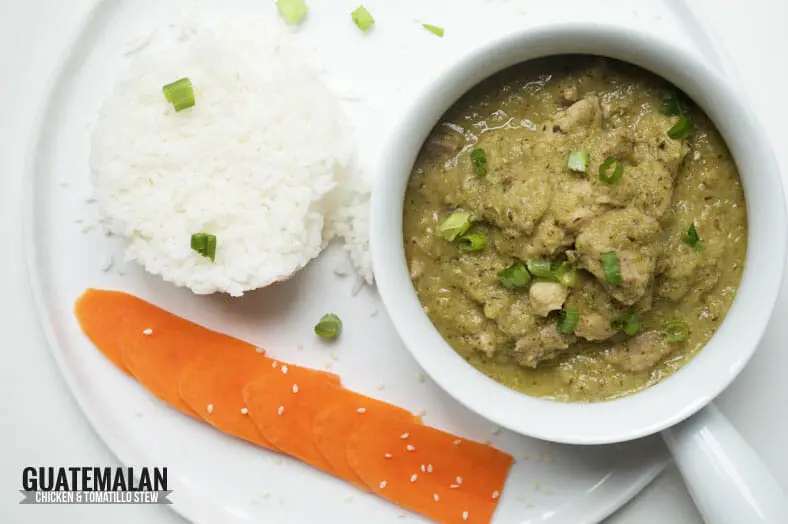Jocon de pollo is a classic Guatemalan dish, heavily influenced by Mayan culture in Guatemala. It is a fusion of ingredients the Maya have been enjoying for centuries.
However, the most important ingredient in this flavorful stew, the chicken, did not make its way into Mayan cuisine until long after the decline of the great Mayan civilization. And to get there, chickens had to cross many continents and oceans.
So, why did the chicken cross the world, and when?

JOCON DE POLLO: RED JUNGLEFOWL, MAYAN CIVILIZATION, AND TIMELESS TOMATILLOS
It is hard to imagine a world without domesticated chickens. The feathered creatures area mainstay of cuisines across the world, and their eggs are a miraculously adaptable ingredient.
There was once a time when chickens did not exist. It was not until jungle fowl were domesticated in Asia that the evolution of jungle fowl into chicken began, and the course of history was changed.
THE DOMESTICATION OF RED JUNGLEFOWL, WHICH DEFINITELY CAME FIRST
Like many stories that begin thousands of years ago, the origin story of chicken is shrouded in uncertainty. How exactly jungle birds in Asia, or perhaps the Indian subcontinent, wandered out of the jungle and eventually became chickens is a bit of a mystery.
We do know approximately when and where the first jungle fowl were domesticated. But even more fascinating, is the story of how chickens began to spread across the globe.
Scientists believe the Red junglefowl to be the progenitor of the domesticated chicken. Red junglefowl are found in India and across Southeast Asia, so that is likely where the first instances of domestication took place. There are other species of junglefowl who were most likely involved in the creation of domesticated chickens, but red junglefowl are considered the most important species involved.
Junglefowl, whether they were red, yellow, or grey, were not domesticated thousands of years ago because they supplied eggs or meat. In fact, it was the cocks’ propensity for aggression that sparked the domestication of the species. Yes, cockfighting is the reason that chickens are what they are today.
As long ago as 6,000 BCE the junglefowl were being bred for cockfights in China. The inherent aggression and built in weaponry that roosters possess provided entertainment and a sport upon which nobility and commoners alike could gamble.
It was out of the Indus Valley, however, that the bird began to make its westward migration, in approximately 2,000 BCE. From their, traders brought chickens to the Middle East, into Mesopotamia, Egypt, and eventually to Europe.
When Europeans began their colonial exploration of the New World, they brought chickens with them. By this time they were a stable food source, and although they were still used for cockfighting, that was no longer their sole purpose.
And this is how chickens were introduced to Guatemala, during the arrival of Spanish conquistadors in the 1500s.
However, much like the sweet potatoes that travelled from Polynesia to South America, chickens may have crossed the Pacific Ocean in Polynesian boats long before Europeans set foot in the Americas. There is some controversy to this claim, but it is possible that in chickens’ conquest of the world they crossed every ocean.
THE MAYAN MYSTERY
By the time the Spanish arrived in what is now Guatemala in the 1500s, the great Mayan civilization had all but disappeared. There were still Mayans living throughout Central America, but they had mysteriously abandoned their great stone cities.
The Mayan civilization, which spanned much of Central America, flourished from 1,800 BCE to 900 CE. The Mayan people enjoyed a robust cultural and religious life, and constructed stone pyramids and structures that astonish archeologists today.
In 900 CE, hundreds of years before Europeans invaded the continent, the Mayans abandoned their great cities. Little is known of why this happened, although a popular theory suggests that a drought may have caused famine, which led people out of the cities and into the jungles in smaller communities.
This is, however, just a theory, we may never know what caused this great civilization to leave their mighty cities to be swallowed up by the jungle.
Although the Mayans no longer live in their great, ancient cities, there are still millions of Mayans living in Central America, particularly in Guatemala. There, they comprise roughly 40% of the population.
Mayan culture is strong in Guatemala, and this has preserved traditions that are now thousands of years old. Many of the languages spoken in ancient Maya are still spoken in Guatemala today, including K’iche’. In fact, K’iche’ is the second most spoken language in Guatemala after Spanish.
One K’iche’ word in particular is of interest to us today. Jok’om, which means mashed. Jocon de pollo is an adaptation of the word jok’om, as the ingredients that make up characteristic green sauce the chicken simmers in must be blended, or mashed together.
TRULY TIMELESS TOMATILLOS
Incredibly, one of the chief ingredients in jocon de pollo has been in existence for not just thousands, but millions of years. While the Mayans have been cooking with tomatillos since long before Columbus sailed the ocean blue, tomatillos themselves have been growing for millions of years.
The oldest tomatillo fossil ever found is, you might want to sit down for this, 52.2 million years old. Yep, 52.2 million years old. Scientists found this wizened old fellow in a lakebed in Argentina.
Tomatillos were not domesticated for millions of years, the oldest evidence of tomatillos being consumed as food is a paltry three thousand years old. They were domesticated in Mexico, and as such, were part of the Mayan diet, and remain so to this day.
Interestingly, tomatillos are part of the nightshade family, just like the nefarious potatoes that so frightened the Europeans when they were brought home from the Andes. However, these little guys never seemed to have any trouble gaining acceptance as a delicious ingredient. Perhaps it’s because they’ve been around so long they just fit right in.
ABOUT THE RECIPE
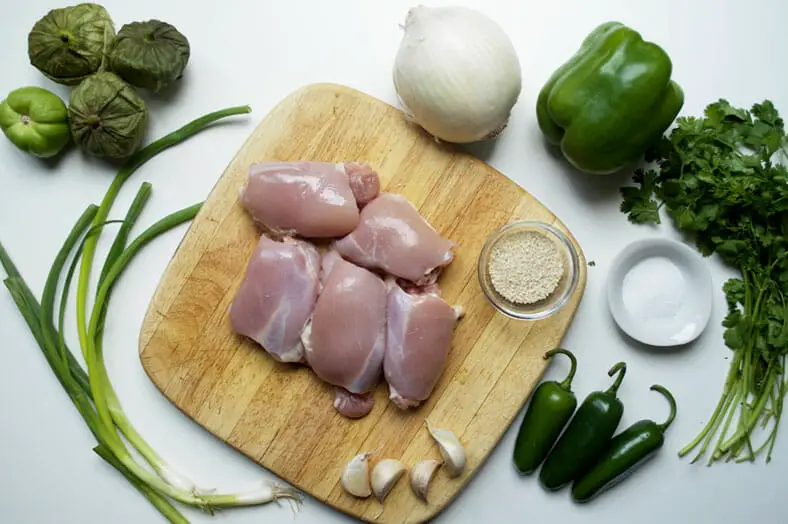
When it comes to preparing jocon de pollo, it’s another one of those fun “set it and forget it” types of preparation. There are two main components to any jocon de pollo that don’t really come together until the very end: the chicken and the green sauce.
In most traditional recipes (though you’ll see we did it differently), the chicken is pre-cooked first in boiling water. It’s cooked for at least 25+ minutes, which not only ensures the chicken is fully cooked but also yields a nice and useful broth that can go into the green sauce thereafter.

While the chicken boils, you can begin creating the likes of your special green sauce. Depending on the recipes you find, some will have you pre-cook ingredients like onions, garlic, jalapeños (if you’re up for spicy) and tomatillos. Ultimately everything makes its way – along with some toasted pepita pumpkin seeds – into a blender or food processor (on Amazon), though, so some other recipes suggest just pulsing the ingredients in their raw forms. Based on what we’ve seen, there’s no real consensus one way or the other here.
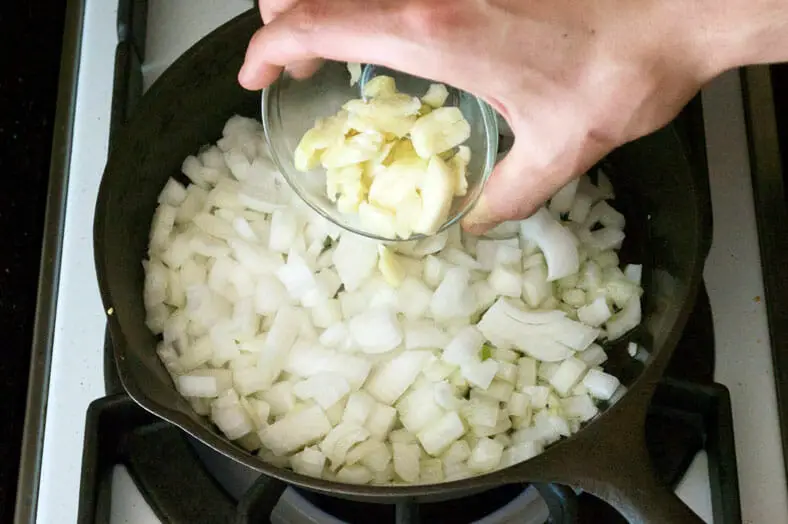
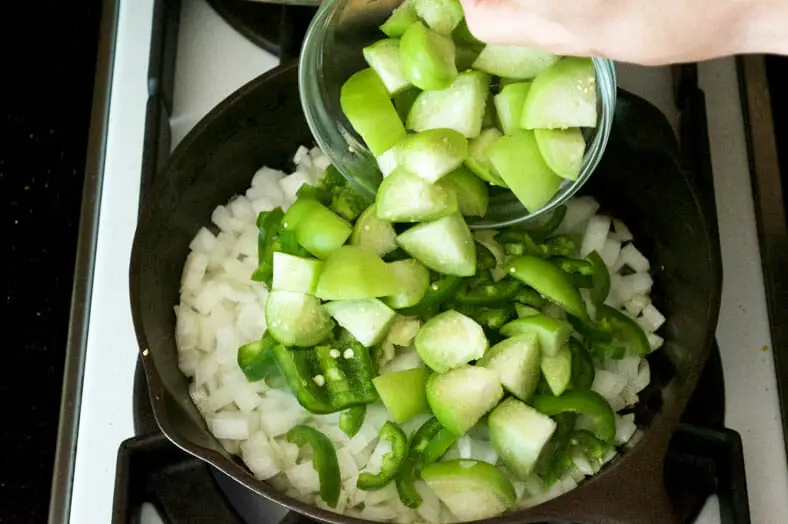
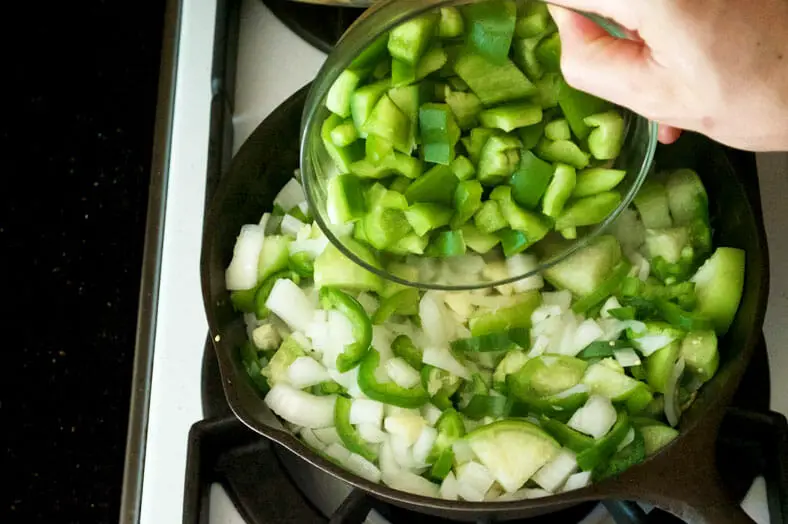

When the chicken is cooked and the broth made, you add some of it into the blender with your vegetables, and it’ll all get pulsed together into a very green, rather clumpy looking sauce. This is where the basis of your jocon de pollo flavor comes from, so enjoy the smells that come once the sauce is ready.
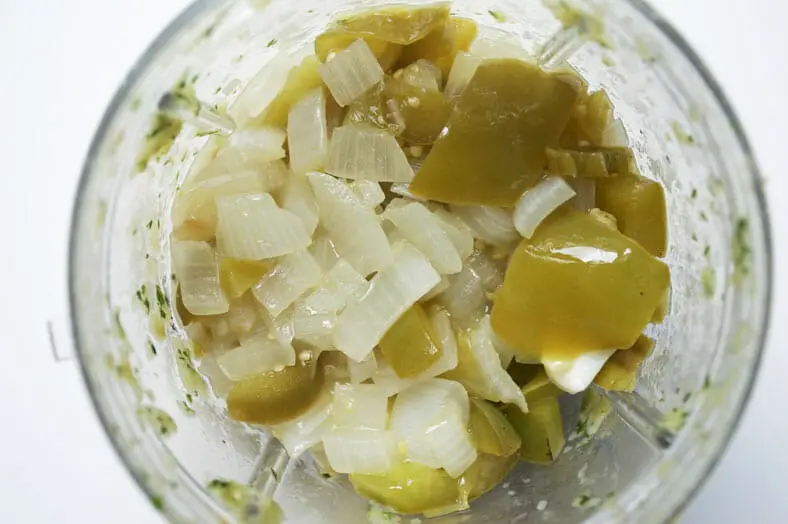
The final part is to then combine your chicken and the green sauce together back into a deep skillet or a stockpot, and let it simmer together for another 15-20 minutes. At the end of this simmering, the sauce will have mellowed, the chicken becomes well flavored, and you’ve got a delicious jocon de pollo ready to eat!

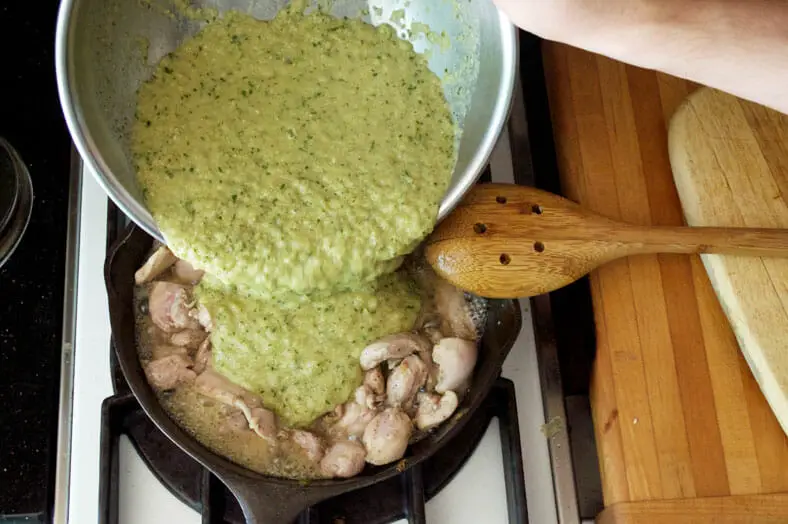
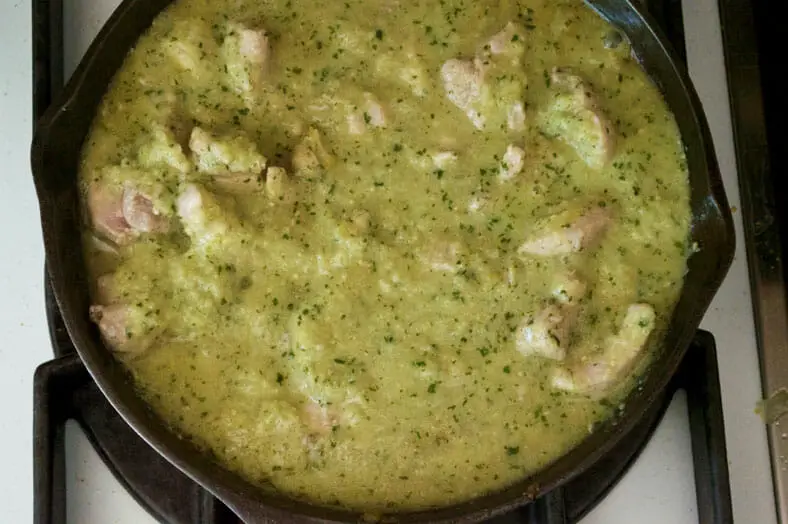
Traditionally, jocon de pollo is eaten with rice alongside it, but depending on the thickness and consistency of your chicken and sauce, it can very well be served on its own as a sort of stew too.

OUR TAKE ON THE RECIPE
Across all the different preparations we saw for jocon de pollo, we came to an overall conclusion: the recipe as it was prepared traditionally is really, really inefficient. We wanted to take on the challenge of making it faster while simultaneously better, so there were a lot of deviations from our original reference – a standard recipe for jocon de pollo – coming up.
For starters, we turned the entire methodology around on its head. We didn’t want to pre-boil the chicken, rather we focused on making the sauce first, which would then be the basis for the chicken to cook in entirely. We liked the idea of cooking down the vegetables first before blending, so our version begins with cooking the vegetables and even adding in water or pre-made broth shortly thereafter. In our case, we had some leftover homemade vegetable stock from a previous recipe, so we used that.
Once the vegetables were cooked and the sauce blended together, we then started searing the chicken in the same pot with flavorful remnants from cooking the vegetables. After the chicken started to brown and cook, we added the green sauce back in, which was then simmered together through the end of the recipe.
All told, we found this version of jocon de pollo to be quicker, easier and (though we might be biased) more tasty. Granted, we added in greater quantities the likes of more garlic and more jalapeños that added to taste, but we’re pretty confident this type of jocon de pollo preparation works well regardless of how many cloves go into your sauce.
In the end, jocon de pollo is a fun, colorful and super flavorful dish to try, especially since it’s incredibly easy to make.
Buen provecho!
How would you prepare your jocon de pollo? Comment below!
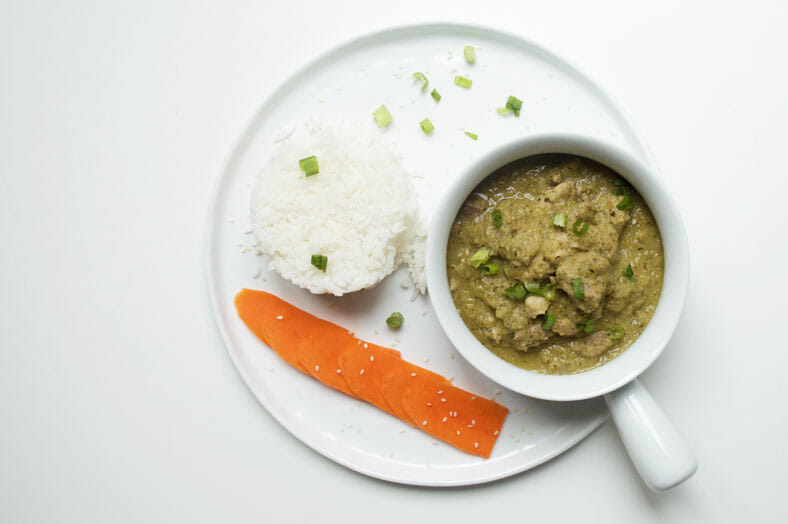

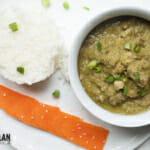
Jocon de Pollo: Guatemalan Chicken and Tomatillo Stew
- Total Time: 40 minutes
Ingredients
- 1 pound chicken thighs (or breasts), chopped into pieces and seasoned with salt & pepper
Sauce
- 4 garlic cloves, chopped
- 1 large white onion, roughly chopped
- 4–5 medium-sized tomatillos, hulled and quartered
- 1 green bell pepper, roughly chopped
- 3 jalapeño peppers, deseeded and sliced
- 1 bunch cilantro, roughly chopped
- 1 bunch green onions, chopped
- 1/4 cup sesame seeds, toasted and then ground
- 2 cups water or chicken stock or vegetable broth
Garnish
- Greek yogurt or sour cream
- Sliced fresh scallions
- Lime and freshly squeezed lime juice
Instructions
Stage 1 – Prepare the Sauce
- Start by taking a deep skillet or a stockpot over medium-high heat. When it’s heated up, add in your sesame seeds and dry-toast them for a ~2 minutes until they start to brown
- When the seeds have browned, remove them from the pan and set them aside for the time being
- Next, add a dash of olive oil into your pan followed by your onions. Cook the onions alone for 1-2 minutes as they begin to sweat and become translucent
- As the onions soften, add in your garlic, jalapenos, bell pepper, tomatillos, cilantro and half of your spring onions into the pan as well. Mix everything well together and cook for 3-4 minutes as everything begins to soften
- Add in your broth/stock and cook everything together for another 5 minutes before taking your pot off the heat
- Very carefully transfer your softened vegetables, the broth and toasted sesame seeds into a blender or food processor (on Amazon), then liquify everything until you get your thickened sauce for jocon de pollo
- Set aside for the time being as you move onto the chicken
Stage 2 – Finish and Prepare Jocon de Pollo
- Take the same stockpot back onto your stovetop at medium high heat, and add a bit of oil
- When the oil’s nice and hot, add in your chicken and begin to sear for 3-4 minutes. Re-season your chicken with salt and pepper along the way
- As your chicken starts to cook, re-add your green sauce back into the pot and cover your chicken liberally with it
- Reduce the heat to a medium-low setting, and simmer the entire jocon de pollo together for ~15 minutes
- Take it off the heat, and you’re ready to serve. Enjoy!
- Prep Time: 10 min
- Cook Time: 30 min
